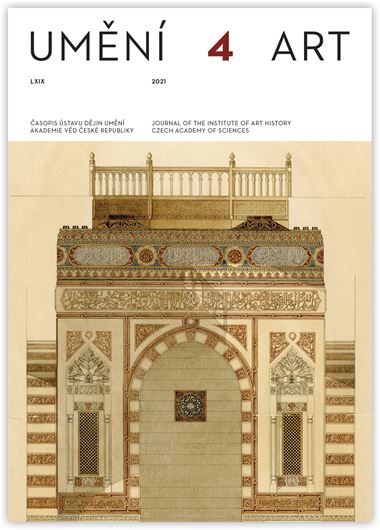Jindřich Vybíral
František Schmoranz Jr. and the Reception of Islamic Architecture in Central Europe
The Islamic past and present only became a fundamental topological part of the Western image of Egypt in the latter half of the 19th century. This was in part due to the development of Oriental studies as a research discipline, the wide range of travel possibilities, and the social and cultural transformation of the Middle East as it sought its modern identity. Islamic forms that had previously been overlooked began to assert their presence as means of architectural representation at world exhibitions, where they competed with replicas of ancient monuments. One of the actors in this process was the Austrian architect of Czech origin František (Franz) Schmoranz Jr. (1845–1892), who designed the Egyptian pavilion at the 1873 Vienna World’s Fair. Schmoranz became thoroughly acquainted with Islamic architecture during repeated stays lasting several months in Cairo, and upon his return worked in Vienna as a respected expert and promoter. He organised several exhibitions of Islamic architecture for the Austrian Museum of Arts and Industry, and created a collection of glass vessels decorated with oriental arabesques for the Exposition Universelle in Paris in 1878. Though he did not publish any research outcomes, as an architect and designer he was one of the pioneers of archeologically based Orientalism. Unlike most Europeans, his appreciation of Islamic art was not restricted to two-dimensional decoration. Schmoranz significantly expanded the radius of the possible reception of the Orient by introducing the Western public to the residential qualities of the Arab home, thus satisfying the growing need for ‘interiority’ in the industrial society of the 19th century. This article deepens and clarifies our knowledge of the life, work and ambitions of this artist, primarily by focusing on the issue of cultural transfer in connection with the 1873 Vienna World’s Fair. It seeks to answer the question of how the building designed by Schmoranz met the expectations aroused in Central Europe by contact with the Orient. In addition, by means of an investigation into the reception of Islamic material culture, the author wishes to contribute to the discussion of alternative forms of Orientalist thinking, which has up till now been predominantly the domain of linguistic and literary research.
Author's email:
vybiral@vsup.cz
Full-text in the Digital Library of the Czech Academy of Sciences:
https://kramerius.lib.cas.cz/uuid/uuid:cbb791fd-aa14-4a84-b90d-d4fb6d9e1105
< back

